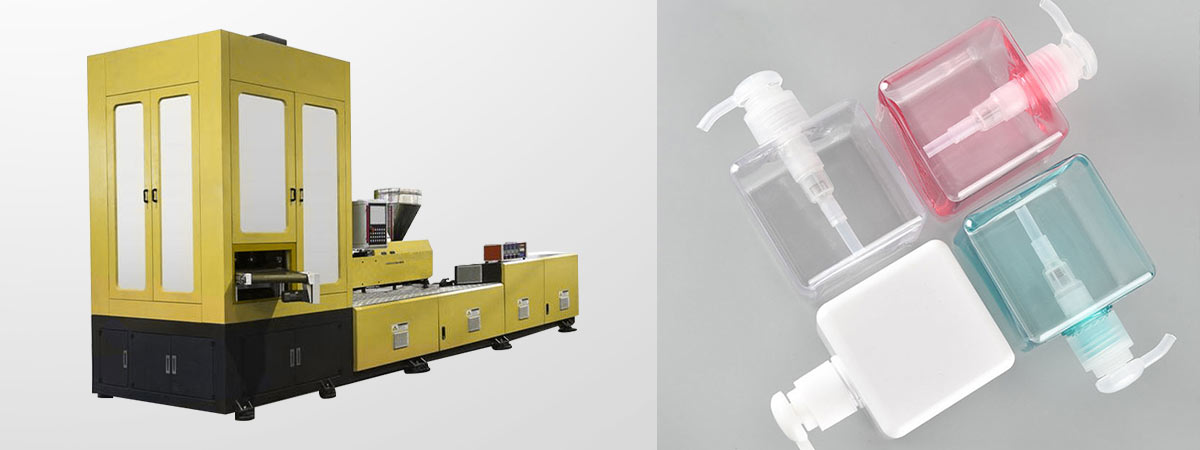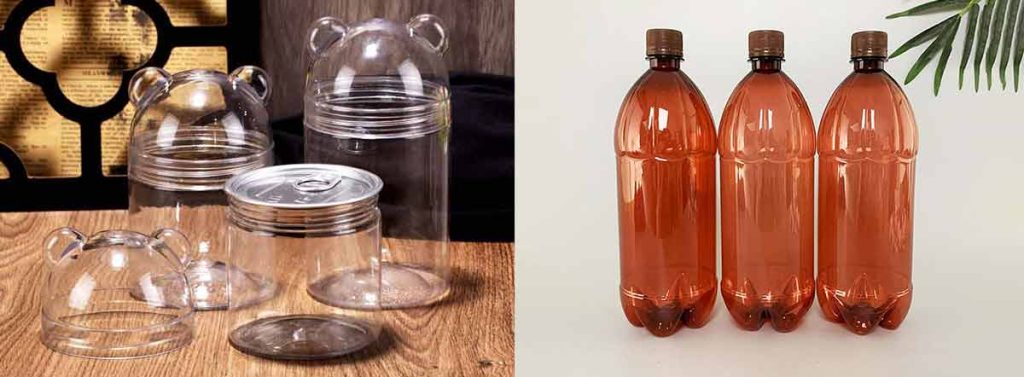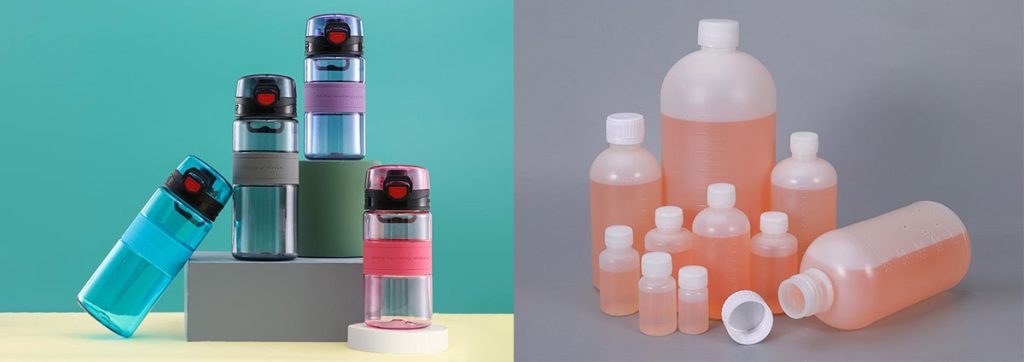

Manufacturers improve transparency in the stretch blow moulding process by focusing on several critical factors. Material selection plays a key role, as high-quality PET increases clarity. Machine settings and moisture control also affect transparency. Cleanliness throughout the process prevents defects. ISBM machine helps achieve consistent results with superior transparency.
Key Takeaways
- Choose high-quality PET preforms with low crystallinity to maximize clarity. This selection allows more light to pass through, enhancing transparency.
- Maintain strict moisture control by thoroughly drying PET preforms before processing. This step prevents cloudiness and ensures better clarity in the final product.
- Optimize machine settings, including heating temperature and blow pressure, to achieve consistent transparency. Regular monitoring helps prevent defects and maintains product quality.
- Implement rigorous cleanliness protocols in the production environment. Keeping surfaces and materials clean reduces contamination and supports high transparency.
- Conduct regular inspections using visual checks and automated sensors. Frequent quality checks help identify issues early, ensuring that every bottle meets clarity standards.
Stretch Blow Moulding Process Overview
Key Steps
The stretch blow moulding process shapes plastic containers with high transparency and strength. Each stage in the process influences the final product’s clarity and quality.
- Injection Molding: Operators heat plastic resin until it melts, then form a preform. This preform must retain heat for effective stretching, which helps achieve better transparency.
- Preform Conditioning and Transfer: The preform moves to a conditioning zone. Here, the temperature stabilizes, ensuring the material behaves uniformly during the next steps.
- Stretch Blow Molding Process: The preform undergoes biaxial stretching and inflation. This action increases both the strength and transparency of the container.
- Cooling and Ejection: The container cools and solidifies, locking in its shape and clarity.
The following table highlights critical steps that affect transparency:
| Step | Importance for Transparency |
|---|---|
| Control of Wall Thickness | Ensures uniform material distribution, preventing optical defects |
| Pre-Blow Stage | Critical for achieving uniform wall thickness distribution |
Operators must pay close attention to pre-blow pressure, timing, and duration. These factors help maintain even wall thickness, which directly impacts transparency and overall quality.
ISBM Machine Role
The ISBM machine plays a vital role in the stretch blow moulding process. It provides precise control over temperature, stretching, and blowing parameters. This control ensures consistent transparency in every batch.
ISBM bottles offer excellent transparency and surface finish, making them ideal for showcasing the contents, particularly in the beverage and cosmetic industries.
By using an ISBM machine, manufacturers can achieve high-quality containers with superior transparency. This advantage helps products stand out on store shelves and meets strict industry standards for clarity.
Factors Affecting Transparency
Material Quality
Material quality stands as a primary factor in achieving high transparency in PET containers. Manufacturers select PET preforms with low crystallinity to maximize clarity. Low crystallinity allows more light to pass through, while high crystallinity can cause the material to appear cloudy or opaque. The cooling rate during the stretch blow moulding process also plays a significant role. Rapid cooling helps maintain low crystallinity, resulting in higher transparency. Slow cooling increases crystallinity, which reduces transparency.
| Factor | Effect on Transparency |
|---|---|
| Crystallinity | Low crystallinity leads to higher transparency; high crystallinity can cause opacity. |
| Cooling Rate | Rapid cooling maintains low crystallinity and high transparency; slow cooling increases crystallinity and reduces transparency. |
| Example Evidence | PET samples cooled rapidly below 120°C had crystallinity under 20% and light transmittance above 90%. Samples cooled slowly at 140–160°C had crystallinity above 30% and light transmittance around 70%. |
RVM – Ravim Polyplast India Pvt. Ltd. highlights transparency as a key indicator of PET preform quality. Their process includes strict quality control, starting with high-grade PET resin. They use advanced testing methods to ensure that each preform meets the highest standards for clarity. This focus on quality ensures that the final containers display excellent transparency, which is essential for product quality and consumer appeal.
Tip: Always choose PET preforms from suppliers who prioritize quality control and use high-grade resin. This step helps guarantee consistent transparency in the finished product.
Moisture Control
Moisture control is critical for maintaining transparency in PET containers. Excess moisture in PET preforms can cause several problems during the stretch blow moulding process:
- Higher moisture levels in PET preforms can lead to difficulties in achieving desired clarity in the final product.
- Wet preforms absorb more heat, requiring additional energy to reach the correct temperature.
- Moisture slows down the transmission of infrared energy, which lengthens heating time.
- Moisture acts as a plasticizer, allowing for more stretch, which can affect the clarity and performance of the molded product.
- A wet preform has a lower glass-transition temperature, impacting material distribution and orientation during the blow molding process.
Manufacturers must dry PET preforms thoroughly before processing. Proper drying ensures that the material heats evenly and stretches correctly, which supports high transparency and consistent product quality.
Biaxial Stretching
Biaxial stretching improves both the optical properties and strength of PET bottles. During the stretch blow moulding process, the preform is stretched in two directions—axially and radially. This action causes the PET molecules to align, which reduces light scattering and increases transparency.
- Mechanical strain, such as stretching, induces structural changes in PET. These changes include molecular reorientation and variations in polymer crystallinity due to chain alignment. As a result, transparency improves because light passes through the material with less scattering.
- For PET films, uniaxial stretching changes the refractive index in the direction of the stretch. Biaxial stretching, however, balances these changes, leading to a more uniform and transparent appearance.
- Biaxial stretching also enhances the barrier properties of PET bottles. For example, the oxygen transmission rate improves significantly, which benefits product quality and shelf life.
| Factor | Description |
|---|---|
| Stretching Ratios | Higher stretching ratios can enhance transparency due to smaller crystallites. |
| Mechanical Recycling | Affects stretchability, which in turn influences transparency. |
Manufacturers must optimize stretching ratios to achieve the best transparency. Small inflation ratios can limit the clarity of the final container, while high ratios help create smaller crystallites and a more transparent product. Proper control of stretching and inflation ensures that each bottle meets the highest standards for transparency and product quality.
Machine Settings Optimization
Heating Temperature and Time

Precise control of heating temperature and time plays a crucial role in achieving high transparency in the injection stretch blow molding process. Operators must avoid both excessive and insufficient heating. High temperatures or prolonged heating can cause the PET material to develop a pearly luster and lose transparency. Low temperatures, on the other hand, can also reduce clarity by preventing proper molecular alignment. The optimal approach involves maintaining a stable and uniform temperature throughout the preform. This ensures that the material reaches the ideal state for stretching without initiating unwanted crystallization.
Tip: Operators should regularly monitor and adjust the oven settings to keep the temperature within the recommended range for PET, typically between 100°C and 180°C. Uniform heating across all preforms helps prevent defects and supports consistent transparency.
A well-calibrated heating system allows the PET to absorb energy efficiently. This results in even softening, which is essential for the next stages of the process. By fine-tuning both temperature and exposure time, manufacturers can maximize transparency and minimize the risk of haze or pearlescence.
Stretching and Blow Pressure
The stretching and blow pressure settings directly influence the clarity and strength of PET bottles produced by injection stretch blow molding. During the stretch blow moulding process, the preform undergoes biaxial stretching. This action aligns the polymer chains, which enhances transparency and improves product quality. If the preform does not receive adequate stretching in both directions, the polymer chains remain disordered. This leads to a hazy appearance and weaker structure.
Operators must balance the stretching ratio and blow pressure to achieve optimal results. Insufficient stretching or low pressure can result in misalignment of the polymer chains, causing haze. Excessive stretching or high pressure may introduce defects such as microfractures, which scatter light and reduce transparency.
The following table summarizes the impact of key machine settings on transparency and quality:
| Machine Setting | Description |
|---|---|
| Blow Molding Pressure | Shapes the preform; affects structural integrity and consistency. |
| Low Pressure (1-15 bar) | Suitable for thin-walled bottles; promotes uniform appearance and material efficiency. |
| Medium Pressure (15-30 bar) | Balances durability and visual quality for standard bottles. |
| High Pressure (30-60 bar) | Required for thick-walled bottles; ensures robustness for demanding applications. |
| Mold Temperature Control | Influences cooling rate, dimensional accuracy, and surface finish. |
| Temperature Uniformity (±1°C) | Prevents defects and ensures consistent wall thickness. |
| Biaxial Orientation | Aligns PET molecules for strong, clear bottles; requires optimal stretch speed for even material flow. |
Operators should also pay attention to mold temperature control. Uniform mold temperature, maintained within a narrow range, helps achieve consistent wall thickness and prevents optical defects. Proper cooling supports the formation of a clear and glossy surface, which is vital for transparency.
Note: Pearlescence and haze often result from uneven stretching or temperature differences in the preform. Operators can reduce these defects by ensuring balanced stretching and precise temperature management.
ISBM Machine Calibration
Regular calibration of the ISBM machine ensures that all parameters remain within optimal ranges for transparency and quality. The ISBM machine provides advanced control over heating, stretching, and blowing operations in the injection stretch blow molding process. Accurate calibration allows the machine to maintain consistent temperature profiles, stretching speeds, and blow pressures across every production cycle.
Operators should schedule routine checks of sensors and actuators. They should verify that temperature readings match actual conditions and that stretching and blowing mechanisms operate smoothly. Calibration also involves adjusting the stretch rod speed and blow timing to match the specific requirements of each preform design.
Tip: Consistent calibration of the ISBM machine not only improves transparency but also enhances overall product quality and reduces waste.
By focusing on these machine settings, manufacturers can optimize the stretch blow moulding process for maximum transparency. This approach leads to higher product quality and greater customer satisfaction.
Cleanliness and Quality Control
Preventing Contamination
Manufacturers maintain cleanliness in the injection stretch blow molding environment to protect transparency and product quality. They remove dust, oil, and foreign substances from all surfaces and equipment. Clean raw materials enter the process, reducing the risk of resin contamination and surface imperfections. Operators monitor melt temperature to prevent inconsistent heating, which can cause defects.
The following table shows how cleanliness impacts transparency in stretch blow molding:
| Factors Affecting Transparency |
|---|
| Surface imperfections |
| Inconsistent melt temperature |
| Resin contamination |
| Clean raw materials |
Contamination can arise from several sources during injection stretch blow molding. The most common include:
- Reactive polyester end groups transform, lowering reactivity.
- COOH end groups increase, causing decomposition during thermal treatment.
- Polyfunctional macromolecules accumulate, forming gels and branching defects.
- Foreign organic and inorganic substances increase, leading to degradation and color changes.
- Hydroxide and peroxide groups build up, causing oxidative degradation when exposed to air and humidity.
Operators use quality control measures to prevent these issues. They check raw materials, optimize process parameters, and conduct real-time inspection. These steps help maintain transparency and ensure high product quality.
| Quality Control Measure | Description |
|---|---|
| Raw Material Control | Ensures resins and additives meet specifications through quality checks, preventing defects. |
| Process Optimization | Involves controlling temperature and pressure to maintain product quality and consistency. |
| Testing and Inspection | Real-time quality checks during production to detect defects and allow for immediate corrective action. |
Transparency Inspection
Inspection plays a vital role in the injection stretch blow molding process. Operators perform final product inspection to verify transparency and overall quality. They use visual checks, light transmission tests, and automated sensors to detect haze, color changes, or surface defects. Frequent inspection helps identify problems early, allowing for immediate correction.
Manufacturers rely on continuous improvement to enhance transparency and market competitiveness. They analyze inspection data and adjust process parameters to achieve consistent results. Quality control teams document findings and share feedback with production staff. This approach supports competitiveness and ensures that every PET bottle meets strict standards for clarity.
Tip: Regular inspection and process control help manufacturers maintain transparency and deliver high-quality products that stand out in the market.
Conclusion

Manufacturers improve transparency by investing in advanced machinery, skilled teams, and sustainable practices. The table below highlights essential contributions and innovations:
| Key Contributions | Innovations |
|---|---|
| Investment in advanced machinery | Lightweighting and biobased plastics |
| Skilled workforce | Process optimization and efficiency |
| Customer-centric approach | Product quality improvements |
Ongoing process optimization and customer feedback drive better transparency and control. Customer feedback shapes standards and supports continuous improvement. Transparency allows brands to showcase product quality, build trust, and increase sales. Companies that prioritize transparency gain a strong market advantage.
FAQ
What Causes Haze in PET Bottles?
Haze often results from uneven stretching, improper heating, or contamination. Operators can reduce haze by maintaining correct machine settings and ensuring clean materials. Regular inspection helps detect haze early.
How Does Moisture Affect Transparency?
Moisture in PET preforms can cause cloudiness and weak spots. Drying preforms thoroughly before processing ensures better clarity and stronger bottles. Proper moisture control remains essential for high transparency.
Why Is Biaxial Stretching Important?
Biaxial stretching aligns PET molecules in two directions. This alignment increases both strength and transparency. Manufacturers use this process to produce clear, durable bottles for beverages and cosmetics.
How Can Operators Inspect Transparency Effectively?
Operators use visual checks, light transmission tests, and automated sensors. These methods help detect haze, color changes, or surface defects. Frequent inspection ensures that each bottle meets quality standards.
